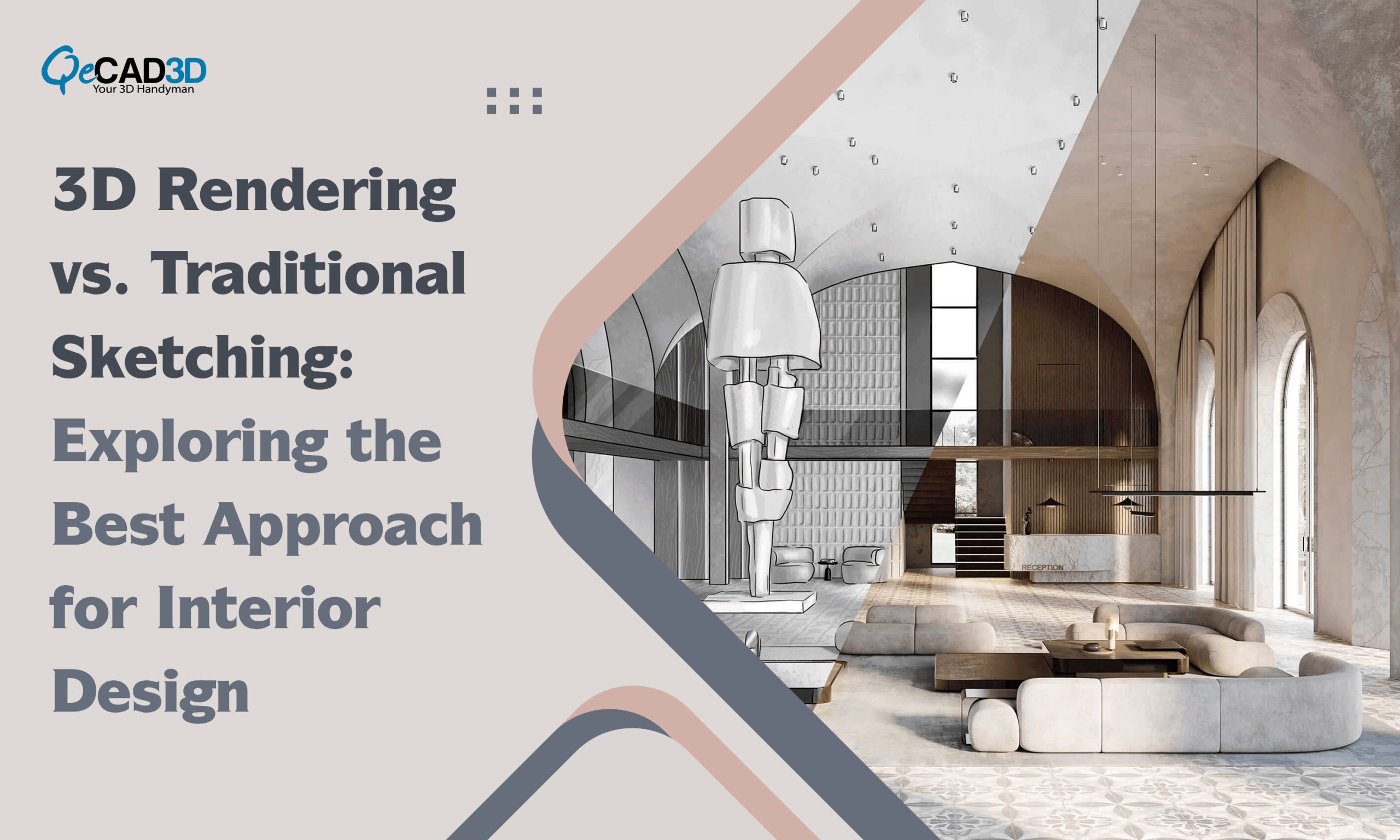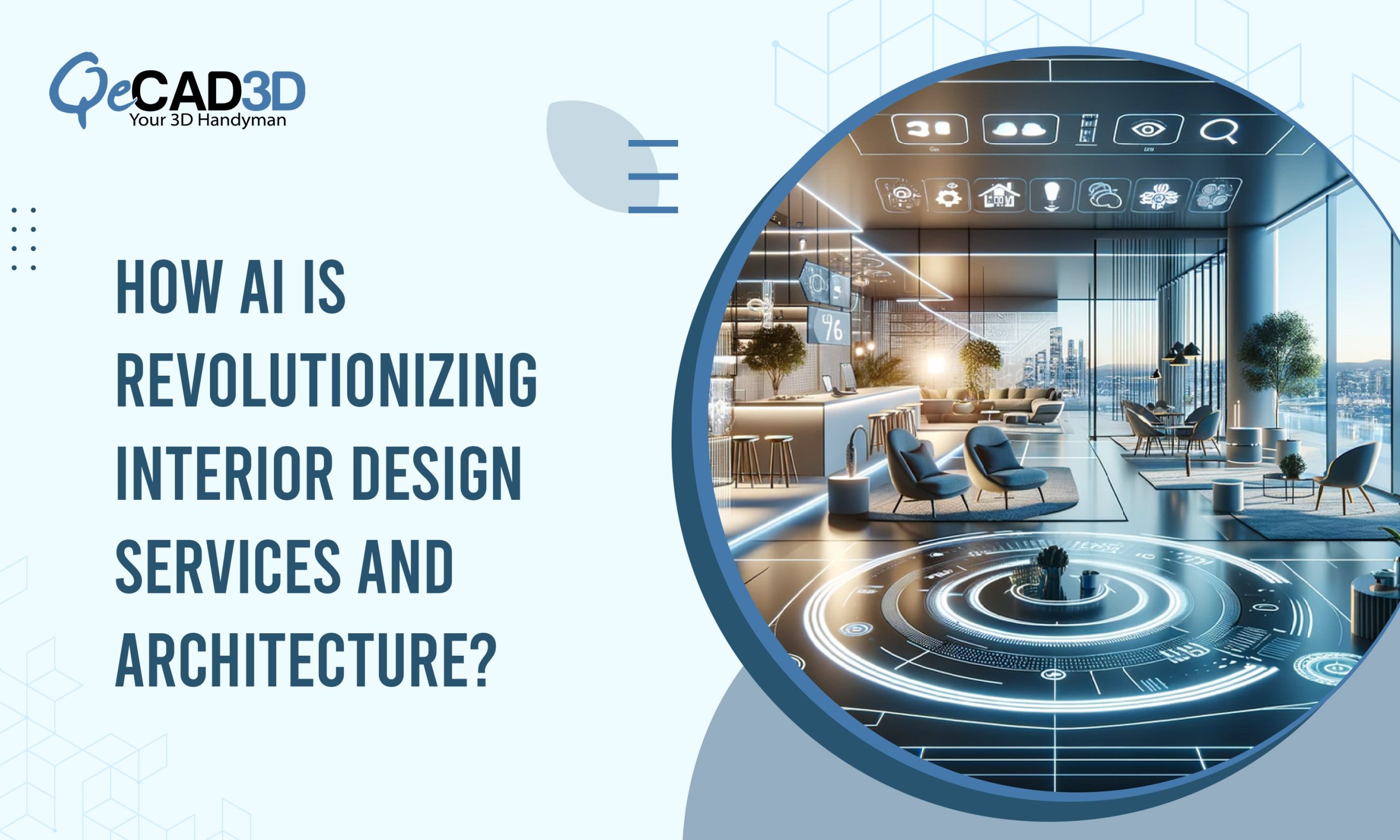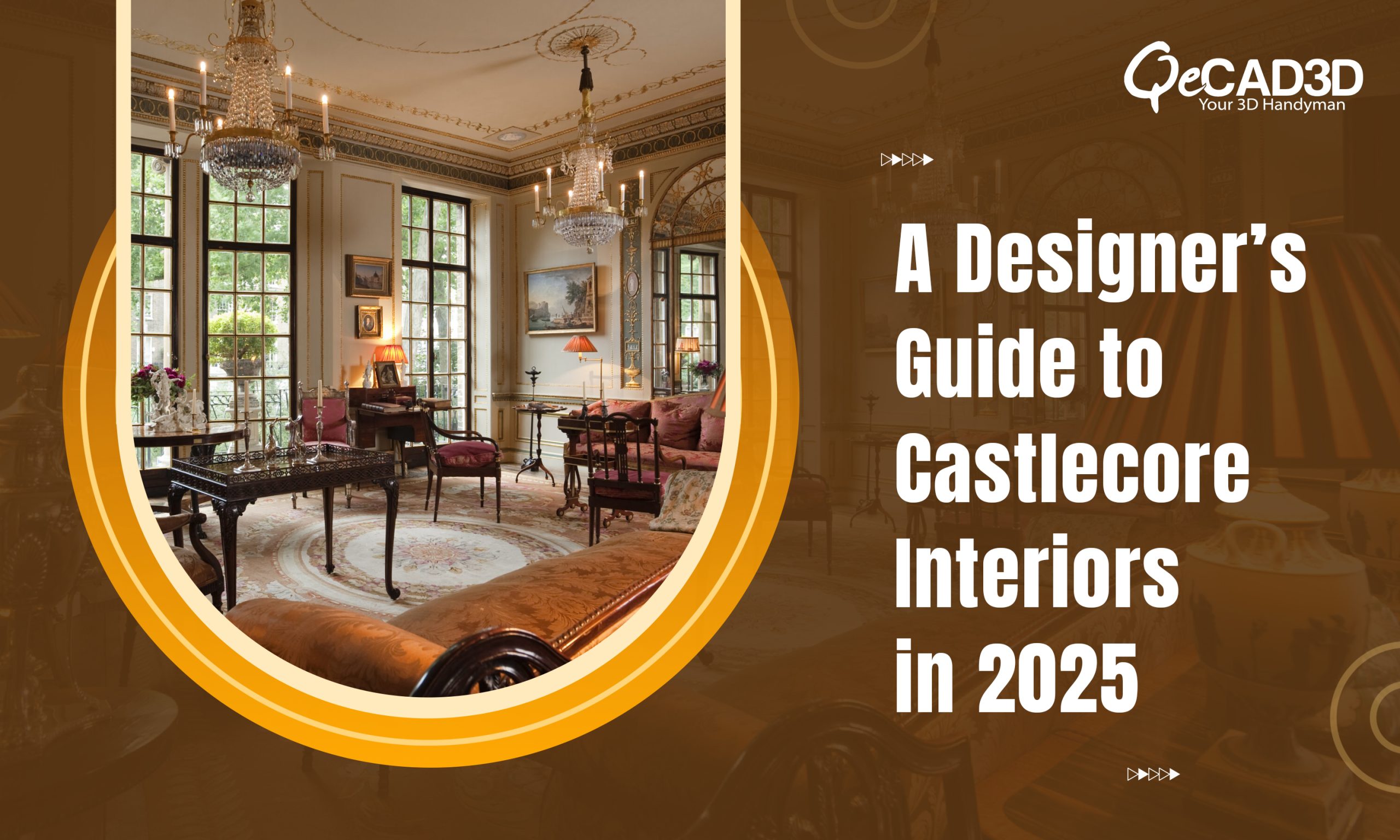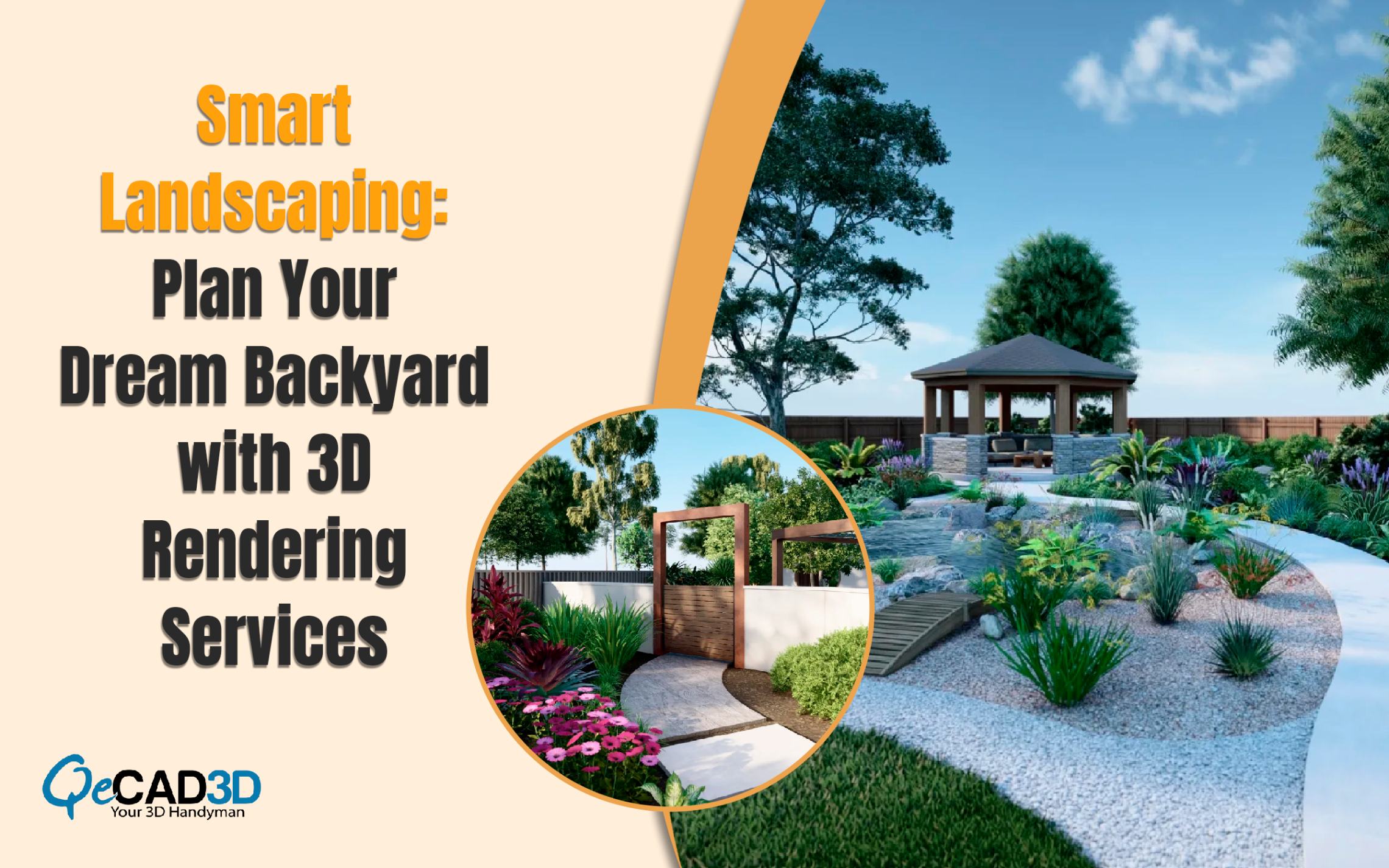3D Rendering vs. Traditional Sketching: Exploring the Best Approach for Interior Design
When we talk about the world of interior design, professionals are constantly seeking innovative ways to communicate their creative visions to clients. Two primary methods have emerged as powerful tools for visualizing designs: 3D rendering and traditional sketching. Each approach has its unique set of advantages and challenges.
The below blog post will let you seep into the debate of 3D Rendering Services vs. traditional sketching, exploring the strengths and weaknesses of each to determine which is better suited for the dynamic field of interior design.
The Art of Traditional Sketching:
Traditional sketching has been an integral part of the design process for centuries. With a pencil or pen in hand, designers can quickly translate their thoughts onto the paper. This method allows for a more organic and spontaneous exploration of ideas, fostering a tangible connection between the designer’s imagination and the physical act of drawing.
Advantages of Traditional Sketching:
- Speed and Flexibility: Sketching is a rapid and flexible process. Designers can quickly iterate through various concepts, making adjustments on the fly. This speed is especially beneficial during client meetings or brainstorming sessions.
- Artistic Expression: Sketching allows designers to inject a sense of personal artistic flair into their work. Each stroke of the pencil can convey emotions, textures, and atmospheres that may be harder to capture in a digital format.
- Portability: A sketchbook and a set of drawing tools are easily transportable, enabling designers to sketch ideas wherever inspiration strikes. This portability is particularly advantageous when visiting project sites or working in collaborative environments.
The Rise of 3D Rendering:
In recent years, technological advancements have revolutionized the design industry, giving rise to sophisticated 3D rendering software. These tools allow designers to create highly realistic and immersive visualizations of their concepts, offering clients a virtual walkthrough of the proposed spaces.
Advantages of 3D Rendering:
- Realistic Visualization: One of the key strengths of 3D rendering is its ability to produce photorealistic images and animations. Clients can gain a comprehensive understanding of the final design, including lighting, materials, spatial relationships, etc. with the accurate Interior Rendering Services.
- Precision and Detail: 3D rendering enables designers to work with an unprecedented level of precision. Every detail, from furniture placement to lighting effects, can be meticulously crafted, providing a comprehensive and accurate representation of the design.
- Client Engagement: 3D renderings offer an immersive experience for clients, allowing them to virtually explore and interact with the proposed design. This can enhance client engagement and satisfaction by providing a clearer vision of the final result.
Choosing the Right Tool for the Job:
While both traditional sketching and 3D rendering have their merits, the decision ultimately depends on the specific requirements of each project and the preferences of the designer. Here are some factors to consider when choosing between the two:
1) Project Complexity:
- Traditional Sketching:
- Well-suited for initial ideation and conceptualization.
- Ideal for projects with a more organic or artistic design approach.
- 3D Rendering:
- Best for complex projects with intricate details.
- Effective for communicating spatial relationships and realistic material representations.
2) Client Communication:
- Traditional Sketching:
- Offers a more personal and hands-on approach during client presentations.
- Conveys a sense of artistic vision and creativity.
- 3D Rendering:
- Provides clients with a highly realistic preview of the final design.
- Enhances communication by minimizing the gap between client expectations and the final outcome.
3) Workflow Efficiency:
- Traditional Sketching:
- Faster for quick ideation and brainstorming.
- Allows for more spontaneous adjustments during the design process.
- 3D Rendering:
- Requires more time for detailed modeling and rendering.
- Increases efficiency during the later stages of the design process.
Conclusion:
In the ongoing debate of 3D rendering vs. traditional sketching for interior design, there is no one-size-fits-all answer. The effectiveness of each method depends on the specific goals of the project and the preferences of both the designer and the client.
In an ideal scenario, a balanced approach that combines the strengths of both traditional sketching and 3D rendering could be the key to a successful design process. Beginning with traditional sketching for initial ideation and creativity, and then transitioning to 3D rendering for detailed visualization and client communication, allows designers to leverage the benefits of each technique.
Ultimately, the choice between 3D rendering and traditional sketching should be guided by the designer’s vision, the project’s requirements, and the desired level of client engagement. By carefully considering these factors, interior designers can navigate the intersection of traditional and digital tools, creating spaces that not only meet functional needs but also inspire and captivate those who inhabit them.






